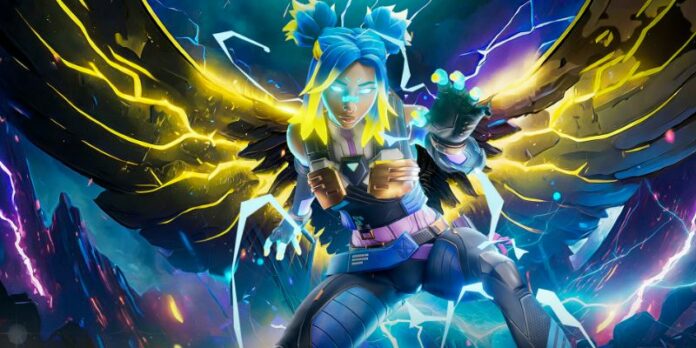Delve into the heart of Valorant’s ranking labyrinth with our comprehensive guide. Understand the intricacies of the ranking system, from your overall Valorant rank distribution to the coveted Act rank, and grasp the significance of rank rating tied to MMR.
Discover where you stand among your peers and gain insights into the dedication it takes to climb the ranks in this competitive FPS.
Whether you’re aiming to gauge your progress or strategize for competitive play, we’ve covered you with all the essential details on Valorant rank and the latest rank distribution trends.
Understanding Your Rank Rating (RR) in Valorant
In Valorant, your Rank Rating (RR) hinges on four critical factors: Win/Loss ratio, Round Difference, Performance Bonus, and Convergence.
Convergence is particularly influential in adjusting your RR based on the gap between your current MMR and Rank. If your Rank lags more than three ranks behind your MMR, Convergence kicks in, potentially doubling your rank increase.
Once your RR stabilizes and you start earning similar points for wins and losses, you’re nearing your MMR. This convergence phase solidifies your Rank and MMR alignment, making future separations less common.
Initially, after placement matches, your Rank may trail your MMR. The system challenges you to “Play X matches to prove your rank,” ensuring ongoing engagement and preventing resting on past laurels.
This dynamic system ensures that maintaining and proving your Rank requires consistent performance, akin to defending a championship title season after season.
Read More : Understanding Network Buffering in Valorant
Games Needed to Reach Your MMR
Typically, your Rank takes around 20 to 40 games to align with your MMR. You should be at your MMR if you grind through 20-40 ranked matches in an episode. It’s the simplest way to gauge your progress besides checking your RR.
The longest recorded journey to reach Rank and MMR is 100 games, though this involves extreme cases like intentional losing streaks or bad luck. Best advice? Dive into games, give it your all, and you should hit your MMR mark after around 40 matches.
Grouping Up and Dealing with AFKs
Teaming up with friends of lower ranks, even in full 5-stacks, won’t hurt your MMR or RR gains! Your rating adjustments are based on your MMR, not your opponents’ ranks.
We don’t reduce RR losses due to AFK players for two critical reasons: to combat toxicity and prevent exploitation.
If we soften the blow of RR losses from AFKs, toxic players might target the weakest link to force them to leave, minimizing their losses.
Map Selection and Gameplay Dynamics
When the game picks a map, it considers each player’s recent history to choose the least played map.
Dodging a map because it’s your least favorite might increase the chances of getting it again, plus it comes with a penalty of -3 RR each time you dodge.
Climbing isn’t about the total number of matches you play; it’s about your consistency—what we call “Variance”—at your current MMR or Rank. Interestingly, less than 35% of alternate accounts reach the same Rank as the primary account!
Read More : Solving DirectX Runtime Issue in Valorant for Windows
How Valorant’s Matchmaking System Work?
When you enter ranked play in Valorant, each queue has its own Matchmaking Rating (MMR).
However, for first-time ranked players, we take cues from other modes, such as unrated, to gauge where you should start.
We can accurately place you in the right skill bracket by assessing your performance across different playlists.
We ensure fair play by actively combating bots and purchased accounts. These can skew MMR and disrupt the matchmaking process.
If you have an alternate account, our system adjusts your MMR swiftly unless it’s a purchased account with artificially inflated stats.
Our matchmaking doesn’t favor high-skill players over others. Instead, it prioritizes finding the longest-waiting player or group and matches them with others close in MMR.
We rigorously test different team compositions to ensure balanced matchups that prioritize fairness.
Understanding Smurfing in Valorant
No, Valorant doesn’t have a dedicated “smurf queue.” If an account ranks quickly, the player’s performance merits it. We don’t segregate players into queues based on wins or losses—we focus on maintaining fair matchmaking for everyone.
Lower ranks in Valorant rely more on Encounter MMR, which reflects performance in individual duels. Higher ranks emphasize Win/Loss MMR, which considers overall match outcomes. Players who excel in both duels and matches will naturally climb the ranks faster.
If an account seems stuck, it’s usually due to inconsistent performance. Take the example of TenZ, who reached Radiant MMR in just 20 games—MMR functions like a ladder where defeating opponents allows you to ascend. Our goal is simple: perform well, beat opponents, and climb the ladder to success in Valorant.
Current Valorant Rank Distribution: Episode Eight, Act Two
Have you ever wondered where you stand among millions of Valorant players worldwide? Here’s a snapshot of the latest ranked distribution in Episode Eight, Act Two, straight from Tracker.GG:
- Iron One: 0.93%
- Iron Two: 2.16%
- Iron Three: 4.46%
- Bronze One: 5.01%
- Bronze Two: 6.29%
- Bronze Three: 6.24%
- Silver One: 7.51%
- Silver Two: 7.19%
- Silver Three: 7.8%
- Gold One: 8.17%
- Gold Two: 7.28%
- Gold Three: 6.67%
- Platinum One: 6.30%
- Platinum Two: 5.06%
- Platinum Three: 4.43%
- Diamond One: 4.09%
- Diamond Two: 3.16%
- Diamond Three: 2.45%
- Ascendant One: 1.95%
- Ascendant Two: 1.26%
- Ascendant Three: 0.78%
- Immortal One: 0.50%
- Immortal Two: 0.16%
- Immortal Three: 0.11%
- Radiant: 0.027%
Gold One currently boasts the most significant player base, but Silver remains the most densely populated Rank, reflecting the diverse skill levels across the Valorant community.
Compared to Riot’s 2021 distribution graph, this distribution shows a more balanced spread, highlighting the competitive nature of ascending to Ascendant, Immortal, and Radiant ranks. These top tiers remain exclusive, attracting only the most skilled and dedicated players in the game.
Those are some things about Valorant Rank Distribution. We hope this article can be a reference for you to play Valorant. To maximize it further, you can top up Valorant only at UniPin right now!

